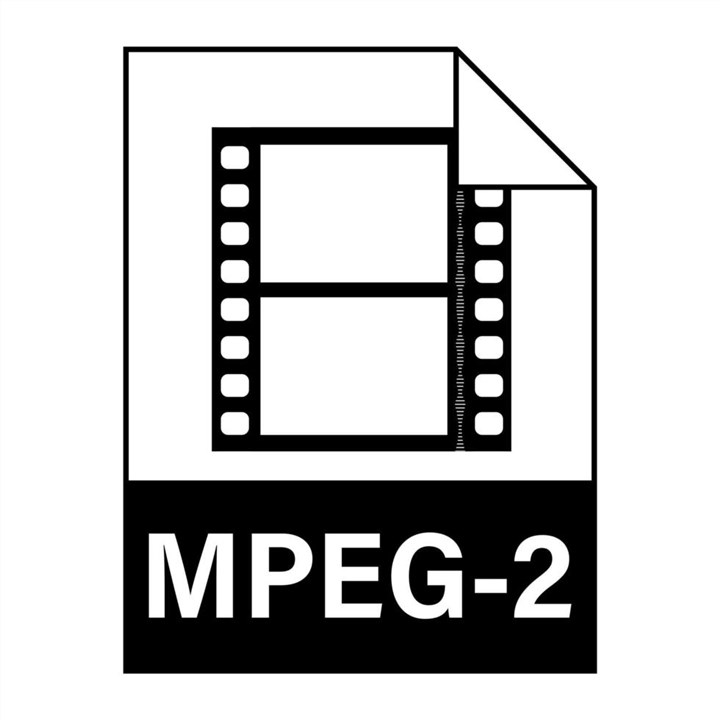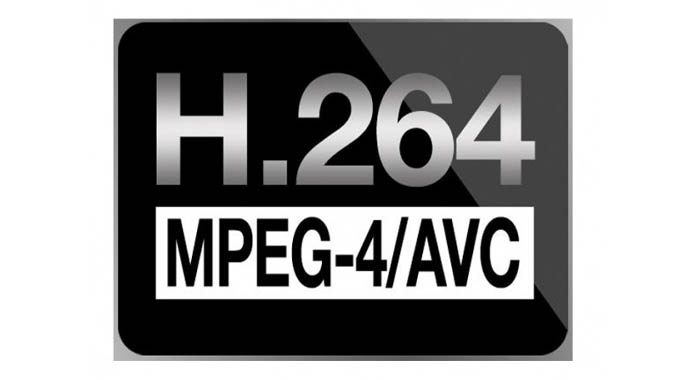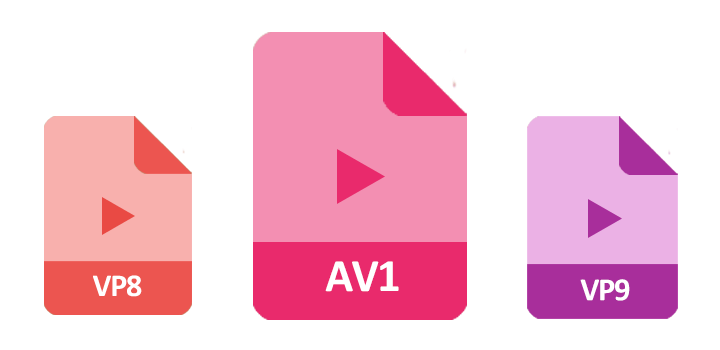Hey there, video enthusiasts! Today, we're diving into the world of MPEG-2, a digital video compression standard that has played a significant role in the evolution of video technology. Let's unpack what MPEG-2 is all about and why it's been a game-changer in the realm of digital video.
MPEG-2, which stands for Moving Picture Experts Group, is a digital video compression standard developed by the MPEG group. Essentially, it's a codec (coder-decoder) that's responsible for encoding and decoding digital video and audio streams. This means it's the technology that allows us to compress video and audio files for more efficient storage and transmission.
Back in 1994, MPEG-2 made its debut as an extension of the MPEG-1 standard. The primary goal behind its development was to handle higher resolutions and bitrates, specifically for broadcast-quality video. This was a significant step forward, as it allowed for the delivery of higher-quality video content to viewers.
Then let's take a closer look at its features in the following:
MPEG-2 Codec Features and Specifications
The MPEG-2 codec is versatile, supporting various resolutions to cater to different viewing experiences. For Standard Definition (SD), it covers resolutions like 720 x 480 (NTSC) and 720 x 576 (PAL). On the other hand, High Definition (HD) resolutions such as 1920 x 1080 (1080p) and 1280 x 720 (720p) are also well-supported.
When it comes to bitrates, the MPEG-2 codec doesn't disappoint. It offers a range from 1.5 Mbps to 15 Mbps for SD, and up to 80 Mbps for HD. This flexibility ensures that you can achieve the desired balance between video quality and file size.
In addition to video compression, the MPEG-2 codec also supports multiple audio compression formats. These include MPEG-1 Audio Layer II (MP2), Dolby Digital (AC-3), and DTS (Digital Theater Systems). With such support, you can ensure that your audio is as high-quality as your video.
To further understand the MPEG-2 codec, it's essential to grasp the concept of profiles and levels. Profiles define the set of features and capabilities supported, with options like Simple Profile (SP), Main Profile (MP), and High Profile (HP). Each profile offers a different set of functionalities, allowing you to tailor your video compression to your specific needs.
Levels, on the other hand, define the maximum resolution, bitrate, and processing power required. For instance, you have options like Main Level (ML), High Level (HL), and High-1440 Level. Understanding these levels helps you optimize your video compression settings for the best results.

Applications and Use Cases of MPEG-2 Codec
In the beginning, we have told you that MPEG-2 Codec was primarily invented for broadcast-quality video. However, that is not all that it is good at. You can also find it in DVD videos, digital cable/satellite TV, video editing and achieving. Check more details below.
1. Broadcast Television
When you're watching your favorite TV shows, chances are, you're experiencing the magic of MPEG-2. This codec is the go-to choice for digital television broadcasting, serving as the standard for DVB (Digital Video Broadcasting) and ATSC (Advanced Television Systems Committee). Major broadcasters worldwide rely on MPEG-2 for transmitting both standard definition (SD) and high definition (HD) content, making it a cornerstone of the television industry.
2. DVD Video
Ever wondered how those DVDs deliver such crisp and clear video? Well, you can thank MPEG-2 for that! It's the primary video codec used on DVDs, enabling high-quality video playback with support for features like multiple audio tracks, subtitles, and menus. So, the next time you pop in a DVD, remember that MPEG-2 is working behind the scenes to bring your favorite movies to life.
3. Digital Cable and Satellite TV
If you're a fan of digital cable or satellite TV, MPEG-2 is the unsung hero that makes it all possible. Cable and satellite TV providers rely on this codec to efficiently distribute multiple channels within a limited bandwidth. This means you get to enjoy a wide array of programming, all thanks to the efficient distribution enabled by MPEG-2.
4. Legacy Video Editing and Archiving
Before the rise of more efficient codecs, MPEG-2 was the go-to choice for video editing and archiving. While newer codecs have taken the spotlight, MPEG-2 still holds its ground in some legacy systems and workflows. Its reliability and widespread adoption in the past have cemented its place in the world of video editing and archiving.
Advantages and Limitations of MPEG-2 Codec
In this part, let's dive into the advantages and limitations of this widely used codec. Start with its good ones first.
1. High-Quality Video Compression for SD and HD Resolutions. MPEG-2 codec offers impressive video compression for both standard definition (SD) and high definition (HD) resolutions. This means that it can efficiently reduce the file size of videos without compromising much on the visual quality. This is particularly important for broadcasting and DVD authoring, where maintaining high quality is crucial.
2. Supports a Wide Range of Bitrates and Resolutions. One of the key advantages of MPEG-2 is its flexibility in handling different bitrates and resolutions. This makes it suitable for a variety of applications, from digital television to DVD and Blu-ray authoring. It can adapt to different bandwidth constraints and display resolutions, providing versatility in video delivery.
3. Backward Compatibility with MPEG-1. MPEG-2 maintains backward compatibility with its predecessor, MPEG-1. This means that devices and software that support MPEG-2 can also handle MPEG-1 content. This backward compatibility ensures a smooth transition and allows for the continued use of MPEG-1 content in MPEG-2 systems.
4. Widely Adopted and Supported by Various Hardware and Software Platforms. MPEG-2 has gained widespread adoption and support across hardware and software platforms. This ubiquity makes it a reliable choice for video encoding and decoding, as it ensures compatibility with a wide range of devices and applications.
Now, let's take a look at the limitations of MPEG-2 codec.
1. Relatively High Bitrates Compared to Newer Codecs. In comparison to newer codecs such as H.264 and HEVC, MPEG-2 tends to have relatively higher bitrates for the same level of visual quality. This can result in larger file sizes, which may be a concern when considering storage and bandwidth requirements, especially in today's era of high-resolution content.
2. Limited Support for Higher Resolutions. While MPEG-2 excels in handling SD and HD resolutions, it faces limitations when it comes to supporting higher resolutions such as 4K and 8K. As the demand for ultra-high-definition content continues to grow, this limitation becomes more pronounced in modern video production and distribution.
3. Lack of Advanced Features like Scalable Video Coding and Parallel Processing. MPEG-2 lacks some of the advanced features found in newer codecs, such as scalable video coding and parallel processing. These features are essential for optimizing video delivery and enhancing compression efficiency, which may put MPEG-2 at a disadvantage in certain use cases.
MPEG-2 Codec Alternatives and Successors
1. H.264/AVC (Advanced Video Coding)
When it comes to successors of the MPEG-2 codec, H.264/AVC takes the spotlight. Developed to offer better compression efficiency and support for higher resolutions, this codec has become a game-changer in the world of video technology. It's widely adopted for various applications, including Blu-ray Discs and online video streaming. But what makes it stand out?

H.264/AVC not only delivers improved compression efficiency but also supports resolutions up to 8K, making it a versatile choice for high-quality video content. Its widespread adoption speaks volumes about its effectiveness in meeting the demands of modern video production.
2. HEVC (High-Efficiency Video Coding)
Enter HEVC, also known as H.265, the next big thing in video compression technology. This successor to H.264 takes compression efficiency to the next level, designed specifically for ultra-high-definition (UHD) video and resolutions up to 8K. But how does it achieve such remarkable efficiency?
HEVC utilizes advanced encoding techniques to significantly reduce file sizes without compromising on visual quality. This makes it a top choice for delivering stunning UHD content while optimizing storage and bandwidth usage. With the rise of 4K and 8K video content, HEVC has emerged as a crucial player in the realm of video codecs.
3. AV1 (AOMedia Video 1)
Last but not least, let's shine a light on AV1, an open-source and royalty-free video codec that aims to revolutionize video compression. Developed to provide better compression efficiency than HEVC while being royalty-free, AV1 has garnered support from major tech companies like Google, Mozilla, and Netflix. But what sets it apart from its predecessors?

AV1's commitment to royalty-free usage makes it an attractive option for content creators and distributors. By offering improved compression efficiency without the burden of licensing fees, AV1 paves the way for a more accessible and cost-effective approach to video compression. Its backing by industry giants further solidifies its potential to shape the future of video technology.
Future of MPEG-2 Codec
Despite being considered a legacy codec, MPEG-2 continues to play a significant role in broadcast television and legacy systems. Its widespread adoption and compatibility have cemented its position as a go-to choice for these applications.
It's no secret that newer video compression standards offer better compression efficiency and support for higher resolutions. For instance, the latest codecs boast up to 50% better compression efficiency compared to MPEG-2, enabling smoother streaming experiences and reduced bandwidth requirements. Additionally, these standards incorporate advanced features like scalable video coding and parallel processing, paving the way for more immersive and interactive video experiences.
Looking ahead, the future of video compression standards is geared towards addressing the demands of modern content consumption. With the proliferation of high-resolution content and the rise of immersive technologies like VR and AR, the focus is on enhancing compression efficiency and supporting higher resolutions. This shift is evident in the latest industry forecasts, which project a 30% annual increase in the demand for 4K and 8K video content over the next five years.
Moreover, the future standards are set to embrace advanced features that go beyond traditional compression. Scalable video coding, for example, allows for the efficient delivery of video streams across a wide range of devices and network conditions. On the other hand, parallel processing enables faster encoding and decoding, catering to the growing need for real-time video delivery and processing.
Conclusion
In conclusion, MPEG-2 has been a driving force behind the delivery of high-quality digital video content. Its ability to handle higher resolutions and bitrates has made it a go-to choice for television broadcasting and optical storage formats like DVD and Blu-ray discs. As we continue to witness advancements in video technology, it's clear that MPEG-2 has left an indelible mark on the way we consume and enjoy digital video content.
So, there you have it – a closer look at the impact of MPEG-2 in the world of digital video. Stay tuned for more insights and updates on all things video-related!








